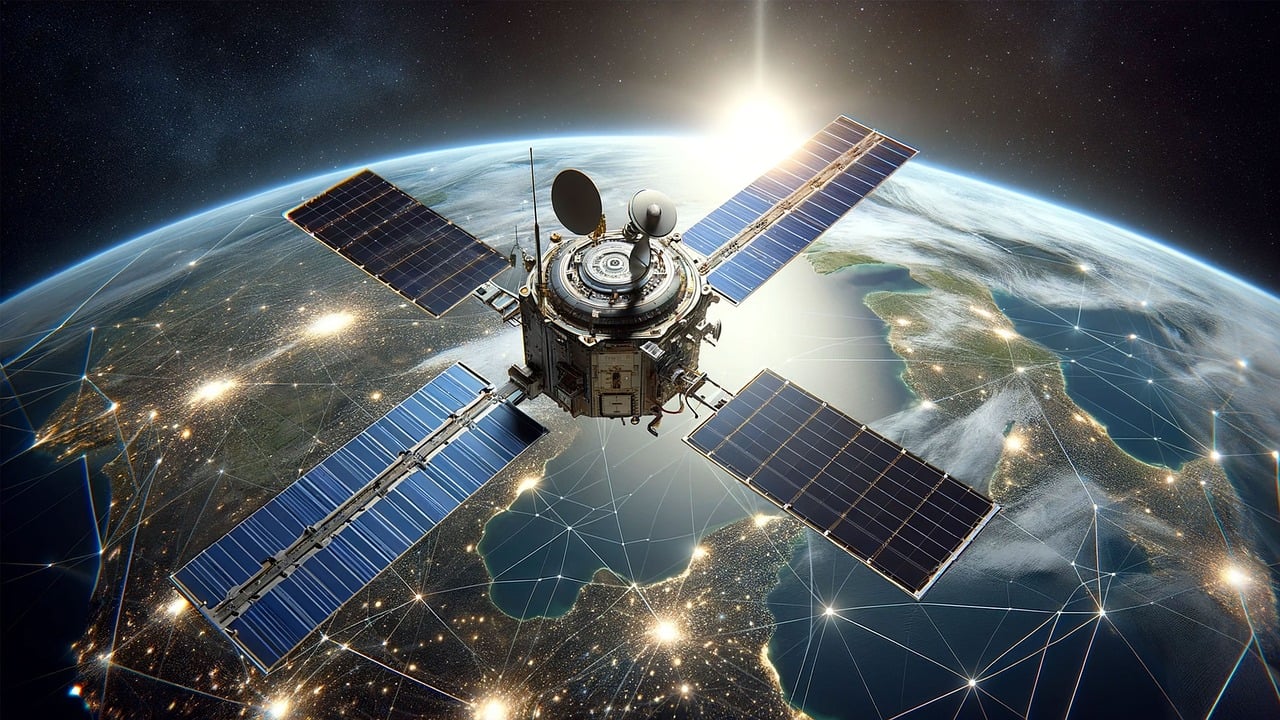The Future of Space Technology in Satellite Communications

Space innovation has made huge headways throughout the course of recent many years, and one of the most extraordinary region of this progress is satellite correspondences. Satellite innovation is the foundation of worldwide correspondence frameworks, giving web access, TV broadcasting, weather conditions anticipating, route, and military applications. As we plan ahead, advancements in space innovation are set to alter satellite correspondences, making them quicker, more solid, and more available around the world.
Progressions in Satellite Correspondence Innovation
The eventual fate of satellite correspondences is being formed by progressions in different areas of room innovation. One of the most intriguing improvements is the ascent of low Earth circle (LEO) satellite groups of stars. Organizations like SpaceX’s Starlink and Amazon’s Undertaking Kuiper are sending off huge heavenly bodies of little satellites in LEO to give broadband internet providers universally, particularly to underserved or far off locales where customary ground-based framework is troublesome or costly to convey.
LEO satellites circle at much lower elevations than customary geostationary satellites, normally between 500 to 2,000 kilometers above Earth. This lower circle permits LEO satellites to offer lower inactivity and quicker information transmission contrasted with customary geostationary satellites, which circle at around 36,000 kilometers above Earth. The lower dormancy is a vital advantage for applications, for example, constant video web based, internet gaming, and telemedicine, where speed and unwavering quality are basic.
Notwithstanding LEO heavenly bodies, high-throughput satellites (HTS) are supposed to assume a significant part in store for satellite correspondences. HTS are fit for giving altogether higher information throughput contrasted with ordinary satellites by utilizing spot radiates that can concentrate signals over unambiguous geographic regions, further developing transfer speed and decreasing obstruction. This takes into consideration better quality and more effective correspondence for both business and military clients.
One more significant area of advancement is the utilization of staged cluster radio wires and optical correspondence innovations. Staged cluster recieving wires, which can electronically direct the satellite’s transmission without genuinely moving the radio wire, will expand the adaptability and productivity of satellite organizations. Optical correspondence, which utilizes lasers rather than radio frequencies to send information, vows to offer a lot quicker information rates and higher transmission capacity, empowering the up and coming age of satellite correspondence frameworks.
Worldwide Network and Space Garbage Difficulties
As the interest for satellite-based administrations develops, the eventual fate of satellite correspondences additionally faces difficulties, especially in regards to space trash. The multiplication of satellites, particularly from LEO star groupings, has raised worries about the collection of room garbage. This garbage can present dangers to dynamic satellites and future missions, so industry pioneers and states are chipping away at arrangements like dynamic flotsam and jetsam expulsion innovations, satellite finish of-life removal conventions, and guidelines to moderate the dangers.
Moreover, the development of satellite organizations raises the requirement for worldwide administrative systems. As additional privately owned businesses enter the space race, guaranteeing the feasible utilization of orbital assets, staying away from signal impedance, and overseeing orbital openings will become basic. Worldwide participation and clear arrangements will be fundamental for guaranteeing that satellite interchanges keep on growing without making new difficulties.
Back and forth discussion
Q: What are the critical advantages of LEO satellite heavenly bodies for satellite correspondences?
A: LEO satellite groups of stars offer lower inactivity and quicker information transmission contrasted with customary geostationary satellites. Their nearer vicinity to Earth empowers faster information moves, causing them ideal for applications that to call for ongoing correspondence, for example, video conferencing, distant training, and telemedicine. Moreover, LEO satellites are more qualified for giving worldwide broadband access, particularly in provincial or far off locales.
Q: How does high-throughput satellite (HTS) innovation work on satellite correspondences?
A: HTS innovation builds the limit and effectiveness of satellite organizations by utilizing spot bars to target explicit geographic regions, as opposed to broadcasting signals across wide districts. This considers more productive utilization of transmission capacity, quicker information speeds, and better help, particularly in regions with appeal for web or correspondence administrations, like metropolitan places, planes, and oceanic vessels.
Q: What difficulties really does space garbage posture to satellite interchanges?
A: Space trash, or space garbage, comprises of old satellites, rocket stages, and other disposed of pieces that circle Earth. As satellite groups of stars develop, the gamble of impacts with space garbage expands, which could harm dynamic satellites and disturb correspondence administrations. Endeavors are in progress to foster advances to eliminate garbage from circle and carry out strategies to guarantee that satellites are de-circled securely toward the finish of their missions.
Q: What will optical correspondence innovation mean for the eventual fate of satellite interchanges?
A: Optical correspondence innovation, which utilizes lasers to communicate information, vows to offer higher information move speeds and more noteworthy transmission capacity than customary radio recurrence based frameworks. This could fundamentally improve satellite correspondence frameworks, particularly for applications requiring high information throughput, like worldwide broadband and ongoing video transmission. The innovation likewise can possibly decrease impedance and work on the security of satellite organizations.
Q: When could we at any point hope to see worldwide broadband inclusion through satellite organizations?
A: Worldwide broadband inclusion through satellite organizations is as of now coming to fruition, with organizations like SpaceX’s Starlink and Amazon’s Task Kuiper sending off a large number of satellites into LEO. While it might require quite a long while to accomplish full worldwide inclusion, the speed of sending is speeding up. By the mid-2020s, numerous remote and underserved regions all over the planet are supposed to have dependable web access by means of satellite.
End
The fate of satellite correspondences is ready for emotional change, on account of progressions in space innovation. With the ascent of LEO satellite groups of stars, high-throughput satellites, and optical correspondence, we can expect quicker, more dependable, and more available correspondence administrations around the world. Nonetheless, to understand the maximum capacity of these innovations, difficulties, for example, space garbage the board and worldwide administrative structures should be tended to. As the business develops, the coordination of new satellite correspondence advances will without a doubt assume a significant part in crossing over the computerized partition and improving worldwide network.



